Flies come in a variety of colors, including black, green, brown, and blue. Some are a solid color and others have markings.
If you have recently seen a black and white fly and are wondering what fly you encountered, continue reading to find out more. We have listed the most common black and white flies you may encounter in your home, garden, or elsewhere.
Table of Contents
1. White-bowed Smoothwing
The white-bowed smoothwing (Scaeva affinis) is a black-and-white flower fly. It is medium-sized with an oval abdomen with white markings that curve and do not reach the margin of the abdomen. Its coloring is what sets it apart from other species. The larvae consume aphids with one larva consuming up to five hundred aphids.
You are likely to see this black and white fly in June. They prefer blue flowers.
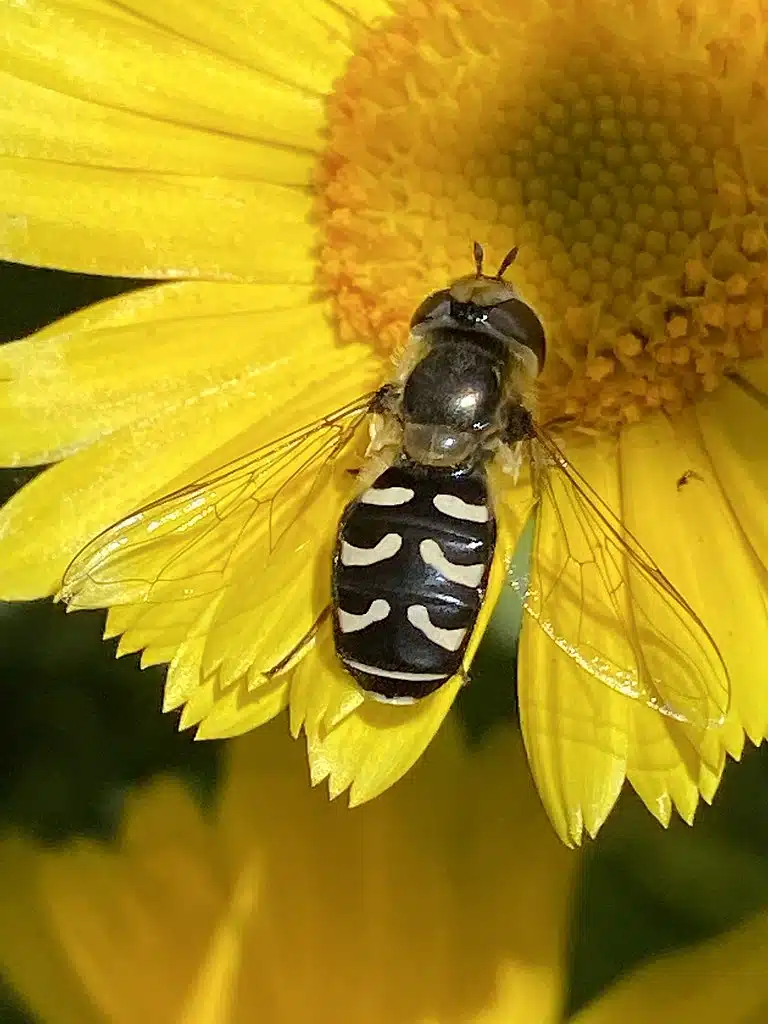
2. Bald-faced Hornet Fly
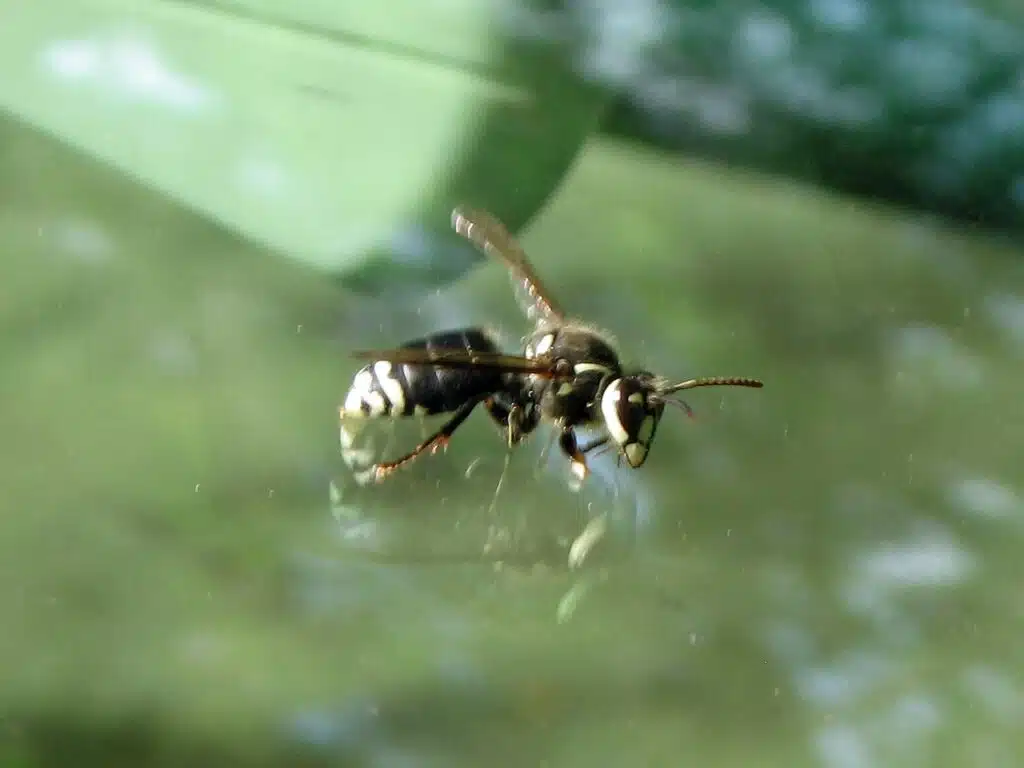
The bald-faced hornet fly (Spilomyia fusca) is a common species, first described in 1864. It is common in North Eastern America. They can hover motionless while in flight. They are also referred to as flower flies and are often encountered on or around flowers.
The larvae are short-tailed larvae found in moist areas, including rot holes in trees. The adults grow to 19mm n length with pale eyes, dark spots, and vertical bands.
3. Anthomyia procellaris
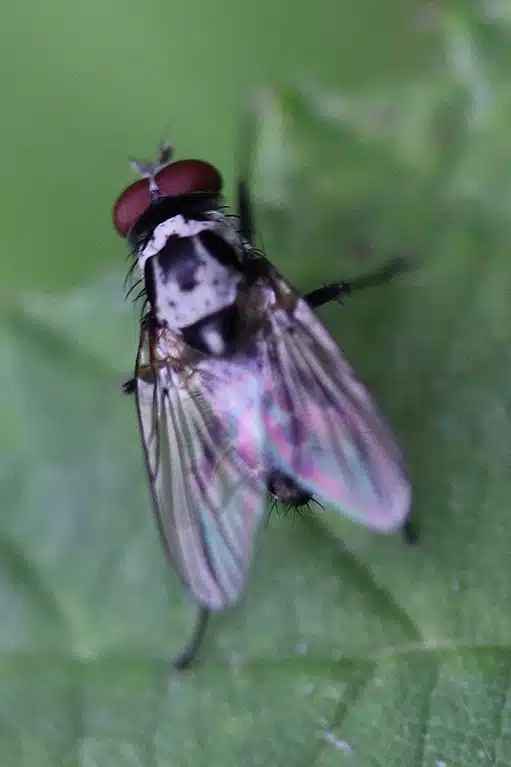
The Anthomyia procellaris is common in Michigan through to North California. They are also found in Europe, China, and Japan. This fly grows to 7mm in body length and is small with velvet black and gray markings. There are three black spots on the thorax.
It has bare eyes and a gray abdomen. There is a black marking on the base of the wings. You can observe this black and white fly in wooded areas and hedgerows. They are common from spring to autumn. They are often seen basking in the sun or feeding on nectar. The larvae feed on bird droppings.
4. Florida Bee-Killer
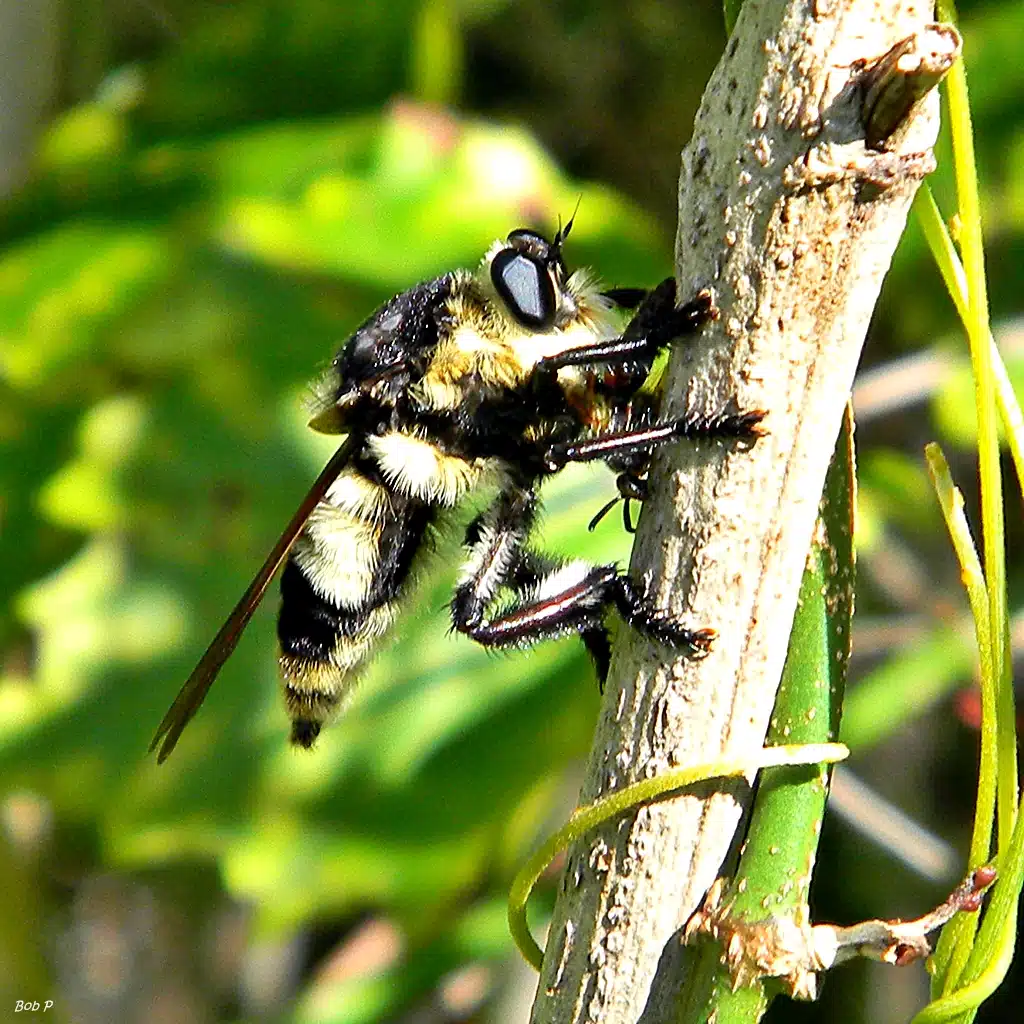
The Florida bee-killer (Mallophora bomboides) is a predatory fly, belonging to the robber fly family Asllidae. They feed on bumblebees. It closely resembles the bumblebee and is common in the eastern and southern United States, including Florida and South Carolina.
It has three basal abdominal tergites, which are covered in yellow hair. The fourth and fifth tergites are covered in black hair. Two segments have pale hair. They can grow to 25mm in body length.
They are very common in the southeastern United States, which includes Alabama, Florida, Georgia, Mississippi, South Carolina, and North Carolina. They are mostly observed in late summer, but in Florida, they occur from April to December.
It prefers open habitats, perching on stalks and the tips of shrubs, which enables it to launch their attack on passing bumblebees.
5. Mouse Bot Fly
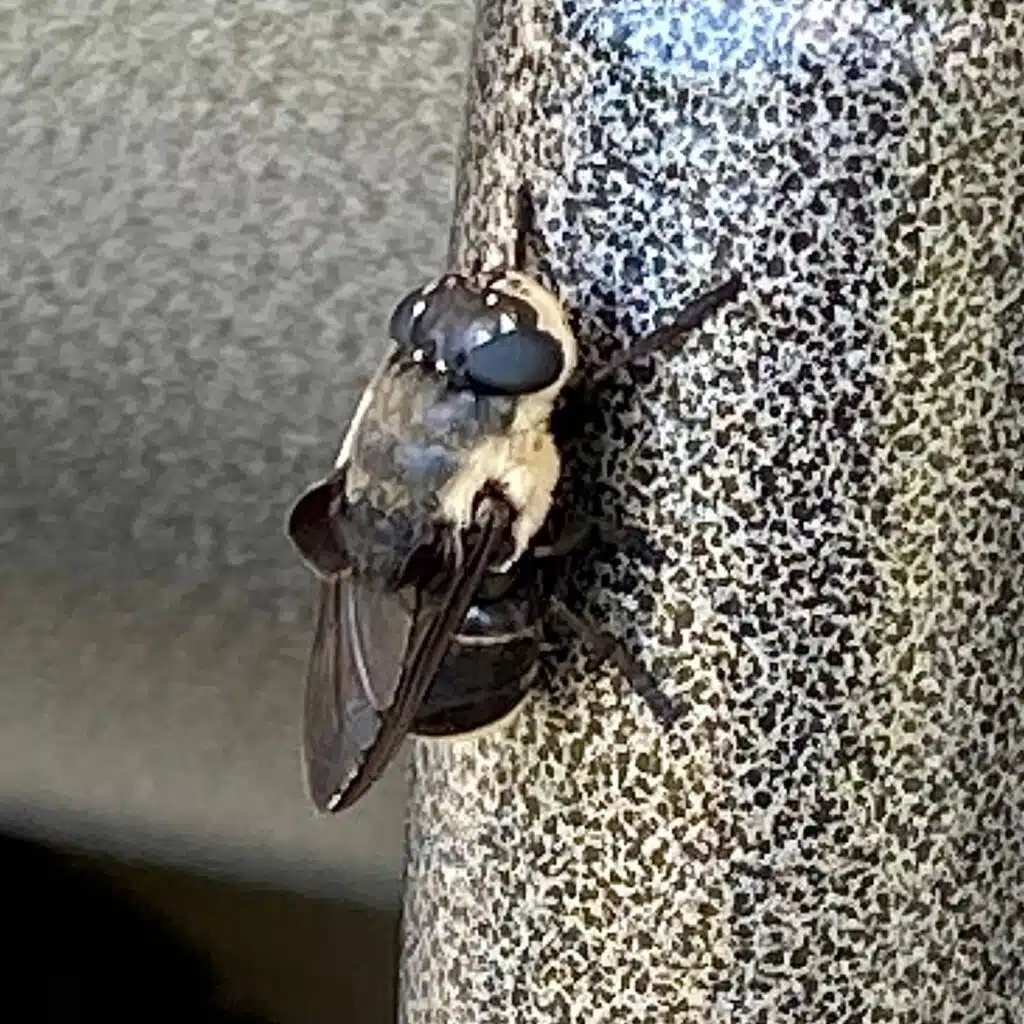
The mouse botfly (Cuterebra fontinella) is a New World skin botfly, belonging to the Oestridae family. They grow to 1cm in body length. The fly is black and yellow. They develop by getting nutrients from the white-footed mouse. They have been known to parasitize humans in some rare cases, causing a large bump to develop on the skin.
This black and white fly is common throughout North America, southern Canada, and Northern Mexico. They live in deciduous forests, close to running water with low-elevation vegetation.
They have a canoe-shaped body with a large groove on the underside, which helps them attach to vegetation. They transition from golden brown to black. The larvae are oval and around 22mm in length with twelve segments.
This is a territorial fly and males will chase other males while patrolling their territory. They fly in oval and figure-of-eight patterns. Females only fly in search of a male. They are often seen congregating on roadsides and close to streams.
The host is their primary food source. Different species feed on different rodent species. They prefer the white-footed mouse but will prey on other rodents if the white-footed mouse is scarce. Other hosts include the cottontail rabbit, cotton mouse, and eastern deer mouse.
6. Tabanus trimaculatus
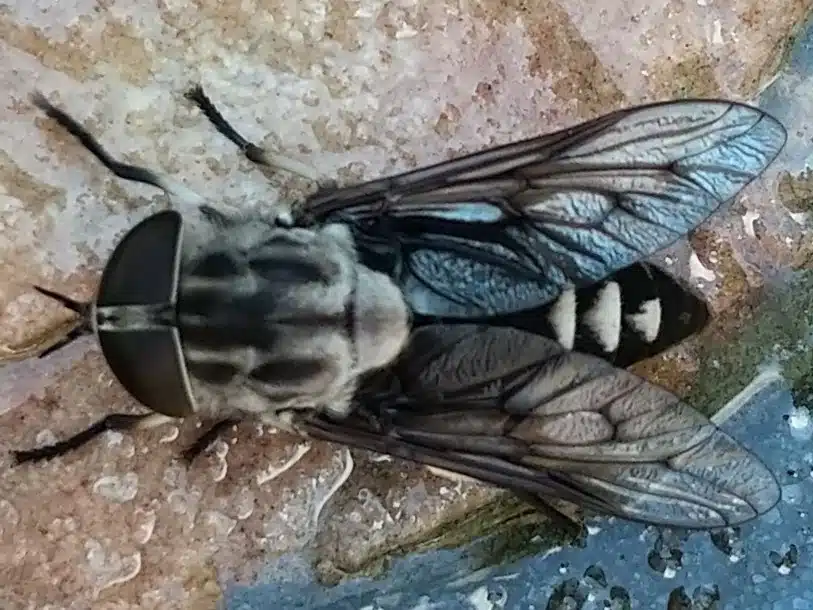
Tabanus trimaculatus is a horsefly and a member of the Tabanidae family. It is a stout fly, small in size with iridescent eyes. As adults, they are very strong fliers and are found near marshes, wooded areas, and streams. They carry several animal diseases.
The female lays black eggs in small clusters on grass. They overwinter in the larval stage and pupate in the spring. They emerge as adults in late June. The females are blood-sucking and a pest to animals and humans. They can suck up to three ounces of blood per day from one single host.
When they are in abundance, agricultural work is carried out at night. Males feed on nectar, plant sap, and honeydew. To control this horsefly, horses are covered in blankets to protect them from fly attacks. Insecticide sprays have proven unsuccessful against this black and white fly.
7. Gymnoclytia occidua

The gymnoclytia occidua is a tachinid fly in North America, belonging to the Tachinidae family. They are common from Michigan to Nova Scotia, Mexico, Georgia, and the southwest to Arizona, Virginia, Texas, and Illinois.
8. Asian Tiger Mosquito
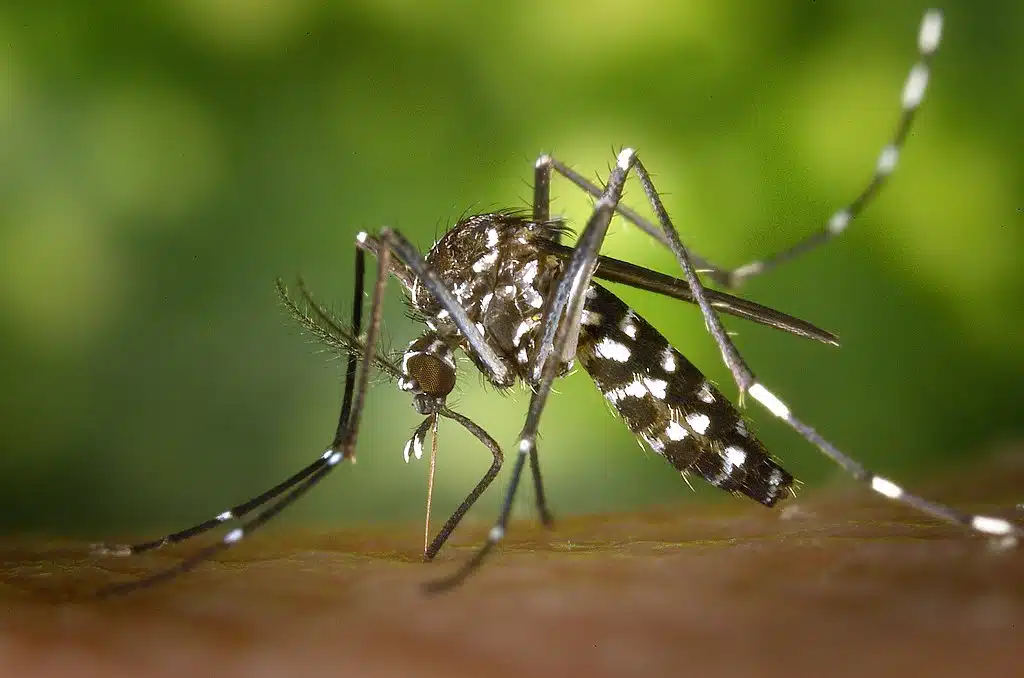
The Asian Tiger Mosquito (Aedes albopictus) belongs to the Culcidae family and is often referred to as the forest mosquito. It is native to subtropical and tropical areas of Southeast Asia. They have spread to other countries over the past few centuries, through goods transport and international travel.
You can identify this fly by the white banding on the body and legs. They are serious pests in communities because they associate with humans. They feed and fly during the daytime. It has a striped appearance, resembling a tiger.
It is a carrier of viral pathogens, including dengue fever, Chikungunya fever, and yellow fever. It was first identified in 1894 by a British-Australia entomologist. It can grow to 10mm in body length with a striking black-and-white pattern.
The body size is determined by the larval population density and food supply. The males are twenty percent smaller than the female, though similar in appearance. Males have bushy antennae and have auditory receptors to detect whines, which are inaudible to humans. The male’s hind leg is seventy percent silver, whereas females are only sixty percent silver.
The female has an elongated proboscis that is used to feed eggs and collect blood. She has a rapid bite and can escape when you try to swat it. Males feed on nectar and do not bite. Eggs are laid close to water.
Further Reading: